Mosses, Liverworts, and Lichens
Media
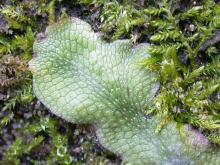
Species Types
Scientific Name
About 112 species in Missouri
Description
Liverworts, along with mosses, make forest floors, streamsides, and spring openings beautiful. They’re fascinating but overlooked.
Media
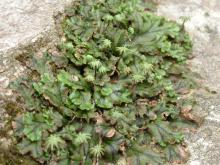
Species Types
Scientific Name
Marchantia polymorpha
Description
Umbrella liverwort is the most famous liverwort in the world. It grows in green ribbons and is very common on the soil of potted plants. It typically forms cuplike gemmae on its upper surface. Its palm-tree-shaped archegona are distinctive, too.
Media
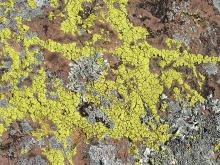
Species Types
Scientific Name
Acarospora spp.
Description
Cobblestone lichens , or cracked lichens, grow flat against their substrate and are textured like lumpy cobblestone streets or old, cracked paint, or they are broken into sections like the mud of a dried lake. Depending on species, the color can range from white to greenish gray to brown to bright yellow.
Media
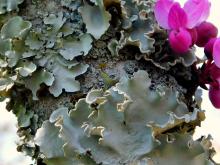
Species Types
Scientific Name
About 436 species in Missouri
Description
A lichen is a composite organism formed by certain fungus species that join with certain algae species. Lichens can be many colors and can be crusty, leaflike, flaky, branching, or mossy. They grow on rocks, trees, or other surfaces.
Media
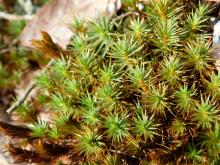
Species Types
Scientific Name
Polytrichum juniperinum
Description
Juniper haircap moss is common and easy to recognize, since it looks like a tiny forest of juniper sprigs. It’s called a haircap moss because the young capsules have densely hairy caps.
See Also
About Mosses, Liverworts, and Lichens in Missouri
Mosses, liverworts, hornworts, and lichens seem rather similar, but these organisms are in very different groups. Mosses, liverworts, and hornworts are small, low plants usually found in damp habitats. Unlike more familiar plants, they lack veinlike structures and do not produce flowers or seeds — instead, they produce spores. Meanwhile, lichens are not plants at all: they are a collection of different fungi that have photosynthetic algae living within their tissues.





















